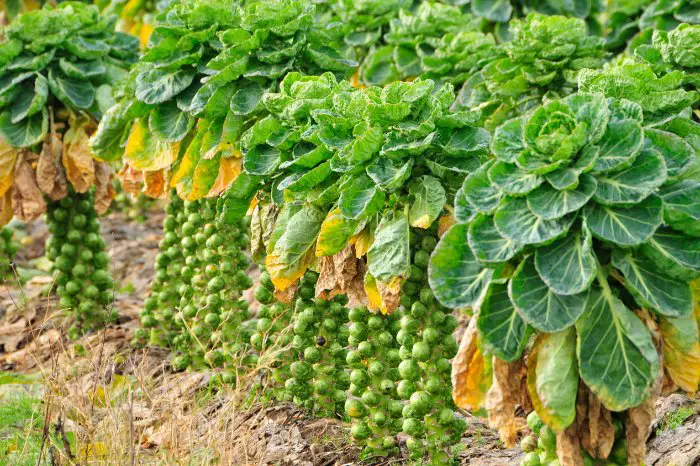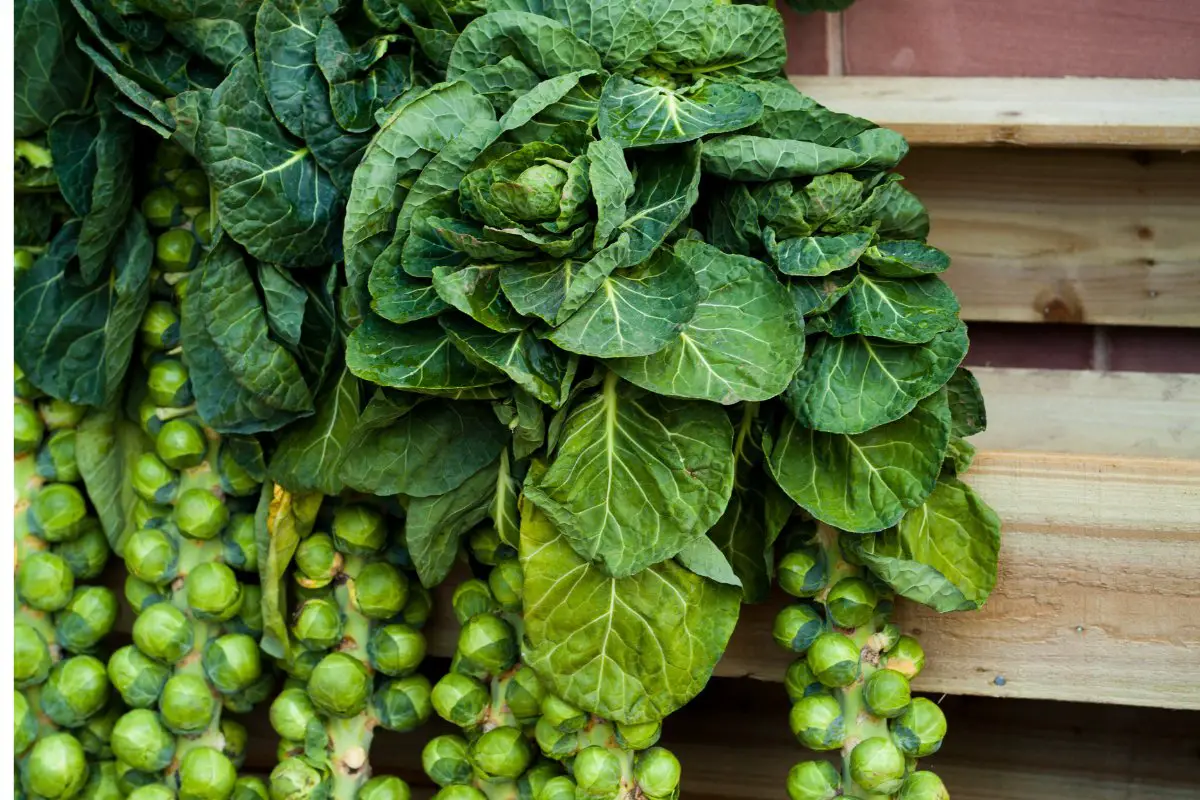Last Updated on November 29, 2022 by Cristina
If you want to grow brussels sprouts from seed, you’re in for a challenge! This is one of the more difficult crops to grow, so only attempt if you can confidently fail.
Brussels sprouts are versatile, and there are many great recipes for using them. Once you have this crop figured out, you’ll enjoy big harvests!
I share everything you need to know about growing brussels sprouts in this article. I also list my top 6 tips for making a success.
How Long Does It Take For Brussels Sprouts To Grow?
Brussels sprouts are known for their relatively long growing season. On rare occasions, it can take up to 31 weeks from planting seeds to reach harvesting.
Seeds take about a week to sprout. After this, the process of becoming seedlings kicks off. They may not reach maturity for a couple of months from this stage. Seedlings are only fully ready to move outside when they’re about 6 weeks old.
The average time you may have to wait between transplanting the seedlings and enjoying grilled sprouts can range from 80 to 100 days.

Take Out Time to Also Read:
How Tall Do Brussels Sprouts Grow?
Brussels sprouts are a small wild cabbage cultivar. The vegetables may be tiny, but they grow in bunches. They need to make space for all the crops, which can cause them to reach the sky. Seedlings that are ready to be planted stand at 6 inches tall.
You don’t have to provide support and staking right from the beginning. However, they may need your help as they start to mature. The average size of a mature brussels sprout is between 2 and 3 feet tall. Some varieties may even surprise you by surpassing the 3 feet mark and reaching 4.
5 Things To Know Before Planting Brussels Sprout Seeds
- Brussels sprouts aren’t a single-variety type of vegetable. They come in all shapes and sizes. Some varieties include:
- Dagan: This cultivar is the easiest to harvest because they figuratively hang by a thread. Gathering all the bright sprouts off the stems only takes a little snap.
- Jade Cross: You can expect tiny sprouts from this cultivar. The most significant advantage of this one is its short maturing time. It only takes around 85 days to harvest.
- Frost isn’t the enemy when you’re growing brussels sprouts. It is a cool-season crop that usually gets planted with a winter harvest in mind. The general opinion is that a few touches of frost make the actual sprout a little sweeter.
- Don’t expect the top sprouts to look ready and be disappointed when they haven’t reached the ideal size. Brussels sprouts ripen from the bottom up, so check the lowest ones first.
- Brussels sprouts are one of the most challenging vegetables to grow. Not every gardener gets it right on the first try. Go ahead and pat yourself on the back if you can add them to your mastered list.
- Move your brussels sprout plants around in your garden every now and then. It helps to combat most diseases that are ready to attack your shoots.
Brussels Sprouts Seeds for Planting – Long Island Improved Heirloom
How To Grow Brussels Sprouts From Seed
Brussels Sprouts are mostly grown from seedlings that are ready to be transplanted. However, you can grow them from seeds.
The best option is to start the seeds in a greenhouse or indoors. You can sow them directly, but this adds 20 days to your growing timeframe. Starting your seeds indoors also protects them from all the dangers they may face.
Start by planting the seeds in the middle of summer. The end of summer also works for most people. This ensures that the plants will be ready to harvest in winter.
Your seeds should be planted half an inch deep, preferably in raised beds. Mix some compost into well-draining soil to make it more fertile. Water is essential right from the start because the ground should stay moist.
The distance between seeds should be between 4 and 5 inches. They will sprout in 7 days, and seedlings will start to develop from this point on. Once they reach a height of 6 inches, they are ready to move outdoors.
Be wary of the many soil diseases, fungal infections, and pests that may delay the growth of your brussels sprouts. Remember that other wild cabbage family members can infect your shoots.
You Might Want to Read these Related Articles:
- The Ideal Brussel Sprouts Growing Season
- Is Neem Oil Safe To Eat? Make Your Food Organic – And Safe!
Tips To Grow Brussels Sprouts From Seed In Your Garden
- The leaves at the bottom of the plant may start turning yellow after a while. Cut them off to give the bottom sprouts some extra sunlight.
- Don’t attempt growing brussels sprouts if you live in hardiness zones other than 3 to 9. They are susceptible to the weather, and you may waste time and money.
- The top leaves protect your entire plant from snow and frost during the winter. If you plan on harvesting at any other time when it isn’t as cold, you can cut the top leaves off. The best time to get rid of them is three weeks before harvesting.
- All cultivars of wild cabbage carry diseases, and they like to pass these on. Avoid planting your brussels sprouts where you previously planted kale or broccoli.
- They may be cool-season veggies, but brussels sprouts need a lot of sunlight. Plant them in a spot with between 6 and 8 hours of sunlight per day.
- Cover your seedlings with shade netting or any other protective layer. This will help to keep the nasty bugs and pests away.
Last Words – Grow Brussels Sprouts From Seed
Brussels sprouts may not be the easiest crop to grow, but once you’ve mastered it, you’ll feel like a pro! This winter veggies will become a favorite in your dishes, and each growing season will become easier. If you keep a close eye on your brussels sprouts and ensure all their meets are met, your crop will thrive.
If you enjoyed this article, let me know in the comments. You’re welcome to add any other questions you have in there too!



